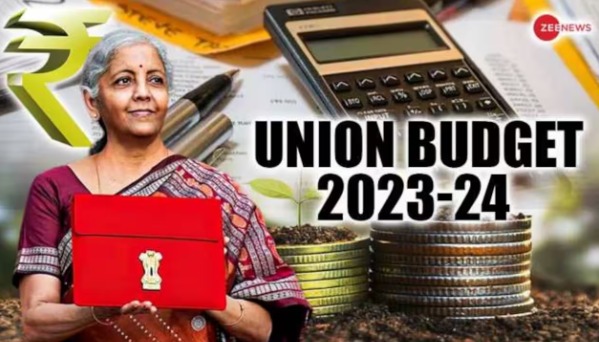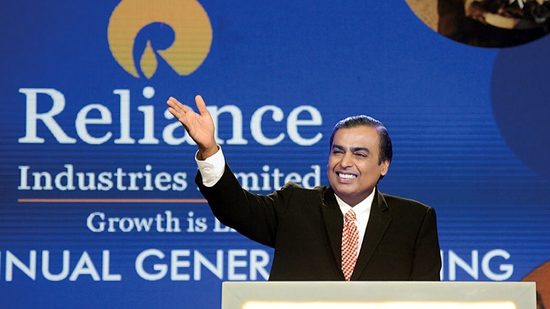
What is the “Union Budget”?
Union budget of India for a year, commonly known as the annual financial statement, is a declaration of the anticipated receipts and expenditures of the government for that specific year, as per Article 112 of the Indian Constitution.
Union budget of India The fiscal year for the government, which runs from 1 April to 31 March, is kept in account by the Union Budget. The revenue budget and the capital budget are two categories in the union budget.
The government’s revenue budget reflects both its revenue inflows and expenditures. Tax income and non-tax revenue are the two types of revenue receipts. Revenue expenditures are the costs associated with maintaining the government’s operations and providing residents with a range of services. The government runs a revenue deficit if revenue outlays outpace revenue inflows.
Government capital payments and receipts are included in the capital budget. The majority of the government’s capital receipts come from loans from the public, other governments, and the RBI. The development of machinery, equipment, buildings, healthcare facilities, educational facilities, etc. is referred to as “capital expenditure.” When the government’s entire spending exceeds its total receipts, a fiscal deficit results.
Today, Nirmala Sitharaman, the finance minister, unveiled her sixth consecutive budget. Additionally, this was the final full budget of the Modi 2.0 administration prior to the 2024 legislative elections.
According to Finance Minister Nirmala Sitharaman, India will lose Rs. 35,000 crore in net tax collection as a result of changes made to direct and indirect taxes in the Union Budget to help people with middle-class incomes.
“Around Rs. 38,000 crore in revenue would be lost, of which Rs. 37,000 crore will come from direct taxes and Rs. 1,000 crore from indirect taxes, while an extra Rs. 3,000 crore in income will be mobilised. So, around Rs. 35,000 crore in revenue are lost each year, according to Sitharaman, who also announced the Union Budget for the upcoming fiscal year, which begins on April 1. “
Finance Minister Nirmala Sitharaman made a significant announcement, saying that although the new tax system would now be the default, citizens could still benefit from the previous tax system on an opt-out basis.
The Modi administration’s goals are the construction of roads, highways, and railway lines, as seen by the budget’s continued emphasis on increasing capex. With adjustments to the new income tax system, the middle class has received some respite, making it quite evident that the government intends to switch from the old system to the new one. With a target of 5.9% in FY 24 and adherence to the aim for the current fiscal year, the FM committed to the fiscal deficit plan in the budget.
Key highlights of the Union Budget of India 2023-
Budget 2023 highlights for aviation
Union budget of India Nirmala Sitharaman, the finance minister, stated on Wednesday that the capital spending for infrastructure development for 2023–2024 will increase by 33% to Rs 10 lakh crore, or 3.3 percent of the GDP.
She claimed that the recently established infrastructure finance secretariat will help to draw in more private investment while presenting the Budget.
She declared that the government would resurrect 50 new airports, helipads, water aero drones, and advanced landing grounds in an effort to significantly enhance regional air connectivity.
The Union Civil Aviation Ministry received Rs 3,113.36 crore from the budget as well. Budget announcements on digital initiatives focuses on artificial intelligence in the education sector
100 laboratories in engineering institutions will be developing applications employing 5G services. Three centers of excellence for artificial intelligence will be established in leading educational institutions.
– A national digital library for kids and teens will be established to make good books more accessible across genres, geographies, and languages.
– The centre plans to hire 38,800 teachers and support staff for the 3.5 lakh tribal students who would attend the 749 Eklavya Model Residential Schools.
Budget 2023: Big bonanza for senior citizens
– The Senior Citizen Savings Scheme, a well-liked investment among the elderly, has doubled its maximum permitted investment as of Budget 2023. The monthly income plan offered by the post office has also been improved.
– Nirmala Sitharaman, minister of finance, quadrupled the Senior Citizen Savings Scheme (SCSS) maximum limit from Rs. 15 lakh to Rs. 30 lakh. The programme offers an annual guaranteed interest rate of 8%. Interest is paid on a quarterly basis.
– In addition, the investment cap for the well-known POMIS (Post Office Monthly Income Scheme) has increased from Rs 4.5 lakh to Rs 9 lakh. The investment cap for combined POMIS accounts has increased from Rs. 9 lakh to Rs. 15 lakh. The scheme pays interest at a monthly rate of 7.1 percent annually.
Highlights for the defence industry in Budget 2023
– The Ministry of Defence has been given the biggest allocation of any ministry, at Rs 5.94 lakh crore, but this is hardly a considerable increase from Rs 5.25 lakh crore for the current fiscal year.
– Following the conclusion of Finance Minister Nirmala Sitharaman’s Budget address, shares of Bharat Electronics, Bharat Dynamics, Hindustan Aeronautics, Paras Defence, and BEML all experienced a 5–9% decline.
– The government has prohibited the importation of a number of commodities, including essential components used in defense equipment, as part of its ambitious Atmanirbhar Bharat scheme. Which implies that they are now being produced in India.
Highlights for the renewable energy sector in Budget 2023
– This budget increases funding for the renewable energy sector by 48%.
– The budget estimate for this year’s allocation is Rs 6,900.68 crore, a 45.3% increase over the RE of Rs 7,033 crore.
highlights of the Budget 2023 for vehicles
– The price of fully imported cars, including electric cars, has increased.
– The customs duty on completely constructed units (CBUs) with an engine capacity of less than 3,000 cc for gasoline-powered vehicles and less than 2,500 cc for diesel-powered vehicles has been raised from 60% to 70%.
– In a similar vein, the customs duty on electrically powered vehicles in CBU form has increased from 60% to 70%, with the exception of those with a cost, insurance, and freight (CIF) value of more than USD 40,000.
Highlights of the IT ministry’s budget for 2023
– The Ministry of Electronics and Information Technology’s budget projection has grown from Rs 11,719.95 crore to Rs 16, 549.04 crore.
– The budget estimate for this year is nearly twice as large as it was two years ago, at Rs 8,118.65 crore for the year of 2021–22.
Highlights of the Road Ministry’s Budget 2023
– In the budget year 2023–2024, funding for the ministry of roads, transportation, and highways (MoRTH) increased by 36% to approximately Rs 2.7 lakh crore.
– The MoRTH’s capital expenditure plan for 2023–2024 includes an estimated Rs 1.62 lakh crore for the National Highways Authority of India (NHAI).
– According to the updated projections from the government, the NHAI will spend Rs 798 crore as IEBR in 2022–2023.
Highlights of the Budget for 2023: What Do the 7 Priorities, or “Saptrishi,” Mean?
– Inclusive development
Union budget of India Many groups have benefited from the government’s Sabka Saath Sabka Vikas strategy, including women, SC, ST, OBC, and other disadvantaged groups.
– Reaching the final mile
We just introduced the Aspirational Blocks initiative, encompassing 500 blocks for saturation of government services, building on the tremendous success of the Aspirational District programme.
– Investment and infrastructure
The capital expenditures are being sharply boosted by 33% to Rs 10 lakh crore, or 3.3% of the GDP.
maximising potential
A national data governance policy will be proposed, allowing startups and academic institutions to access anonymized data to spur innovation and research.
Financial industry
By injecting Rs 9,000 crore into the corpus, the refurbishment projects will go into action as of 2023.
– Green growth
The Ministry of Petroleum and Natural Gas would invest Rs 35,000 crore in capital projects to support the energy transition, the net zero goal, and energy security.
– Youth power
The PM Kaushal Vikas Yojana 4.0 will be introduced in order to train thousands of young people. The program will include new age courses.
Highlights from Budget 2023 for the Fintech Sector
Digital payment volume increased by 76% and value increased by 91% by 2022.
7,400 crore in digital payments using UPI, totaling Rs. 126 lakh crore in 2022.
– In 2023–2024, financial support for digital public infrastructure (DPI) will continue.
– The range of documents available to individuals in DigiLocker will be widened
– DigiLocker, a company, will be established for usage by large companies and MSMEs.
– Social security and access to digital payments are now included in the PM VIKAS programme.
– The UPI subsidy is anticipated to increase by two times over the previous fiscal year, to Rs 2,137 crore.
– For the past three years, funding for the promotion of digital payments has remained unchanged at Rs 1500 crore.
What is cheaper, and what is costlier?
Union budget of India Aircraft, including aeroplanes; unwrought or semi-manufactured types of gold (including gold coated with platinum) or gold in powder form; base metals or silver that has been semi-manufactured or clad with gold; rubber pneumatic tyres of the type used on heading-specific aircraft, either new or retreaded; platinum in powdered, semi-manufactured, or unwrought form; abandoned precious metals and metals covered in precious metals; a number of aquaculture inputs; a few TV and camera pieces; a few TV and camera pieces Automobiles (including electric automobiles); bicycles, imitation jewellery, electric kitchen chimneys, styrene, naphtha, vinyl chloride monomer, compound rubber, precious metal articles, toys and toy components (other than electronic toy parts), silver dolls, and electric toys are the most expensive imports.
Highlights of the Budget 2023: New tax rate
The number of income slabs has been lowered from six to six under the new personal tax system. The government has also raised the thresholds for certain of these groups’ tax exemptions.
0-3 lakh: nil
3-6 lakh -5%
6-9 lakh – 10%
9-12 lakh-15%
12-15 lakh -20%
more than 15 lakh- 30%
Taxes for individuals making Rs 9 lakh or less per year will only total Rs 45,000. That amounts to 5% of their income or a 25% decrease from the Rs 60,000 they were previously paying.
Featured in the 2023 Budget: Ministry of Health and Family Welfare –
In the Union budget of India for FY24, the Ministry of Health and Family Welfare has been given a meager 12% increase from the revised budget estimate for FY 23 to Rs 89,155 crore.
– The department of health and family welfare has received Rs 86,175 crore for the upcoming fiscal year, while the department of health research has received Rs 2,980 crore.
– The budget for the department of health and family welfare for the current fiscal year is Rs 76,370 while Rs 2,775 crore was set aside for the department of health research.
Highlights of Union budget of India for 2023: Key Figures
Food subsidies in FY24 were $1.97 trillion.
The FY24 fertiliser subsidy was 1.75 trillion dollars.
The target for divestments in FY24 is Rs 51,000 crore.
The estimated increase for FY23 is 7%.
Revision of the FY23 divestment objective to Rs 50,000 crore
Proposed capital spending for FY24 is Rs 10 lakh crore, up 33%.
Target for agricultural credit increased to Rs 20 billion
to invest Rs 2200 billion in high-value horticulture
By increasing PM Awas Yojana spending by 66% to Rs 79,000 crore, the FM
Plan to spend Rs. 15 billion over three years to support disadvantaged tribal groups
The third phase of the e-courts will cost Rs 7,000 crore.
An investment of Rs 35000 crore is proposed on energy security and energy transition.
By 2030, the Green Hydrogen Mission wants to produce 5 MMt.
A benefit of Rs 10,000 crore will go to sugar cooperatives.
Compound rubber import taxes increased from 10% to 25%.
Cigarettes’ disaster-related taxes have increased by 16%.
Green Growth-
The government’s “Green Growth” priority sector is driven by green hydrogen, clean energy storage, and transmission.
– Viability gap funds will be used to support battery energy storage systems with a capacity of 4,000 MWh.
Additionally, a thorough foundation for pumped storage will be developed.
– It will cost Rs 20,700 crore to build the interstate transmission infrastructure for the evacuation and grid integration of 13 GW of renewable energy from Ladakh, including Rs 8,300 crore in Central funding.
– The Environment Protection Act will be notified of a green credit programme to promote behavioural change.
Customs duty: In the most recent fiscal year, India’s output of mobile phones surged from 5.8 billion units valued at around Rs 18,900 billion in 2014–15 to 31 billion units priced at Rs 2,75,000 billion.
– A one-year extension of the customs duty exemption for certain mobile phone components such camera lenses and batteries.
Digilocker: The expansion of the government’s Digilocker services for the fintech industry has been announced by Nirmala Sitharaman.
– The focus of Digit Locker’s development into the fintech sector would be on making documentation readily available. “The fintech sector has been made possible by digital services, the PM Jan Dhan Yojana, Indian Stack, and UPI,” Sitharaman added.
DBT programme for youth
A pan-India national apprenticeship program would be implemented with the direct benefit of supporting 47 lakh young people over the course of three years. FM Sitharaman
Banking on construction
The Union budget of India is counting on boosting domestic demand and public investments to spur growth as the world faces a recession. This includes building malls, roads, and highways as well as affordable housing.
Sitharaman on MSMEs
– A corpus infusion of Rs 9,000 crore will enable the refurbishment programs to go into force as of 2023.
– This will make it possible to obtain another $2 lakh crore collateral-free loan.
Additionally, the cost of credit will be decreased by roughly 1%.
Budget 2023: PAN Card
The legalization of the permanent account number (PAN) as a single business identifier was announced in the Union Budget for 2023–2024. The change will enable firms to enter information into the national single-window system using their PAN as their unique identity in place of other data.
Awas Yojana Pradhan Mantri
The Pradhan Mantri Awas Yojana (PMAY) received an allocation of Rs 79,000 crore from the Budget 2023–24, providing a further boost to the government’s initiative to build housing for the urban poor.
The spending of PMAY is being increased by 66 percent to nearly Rs 79,000 crore, the finance minister Nirmala Sitharaman stated when presenting the Union Budget on February 1.
Key Figures
The estimated increase for FY23 is 7%.
to invest Rs 2200 billion in high-value horticulture
Target for agricredit increased to Rs 20 billion
to invest Rs 2200 billion in high-value horticulture
For FY24, capital spending of Rs 10 lakh crore, up 33%, is proposed.
plan to spend Rs. 79000 crore more on PM Housing
Plan to spend Rs. 15 billion over three years to support vulnerable tribal groups
Another year of significant growth in capex
The Center’s capital goal for 2023–24 is Rs 10 lakh crore, which is 33% more than the budget estimate of Rs 7.5 lakh crore for 2022–23.
Educational infra
FM Sitharaman on educational infrastructure: In the next three years, 157 new nursing colleges would be established alongside the 157 medical colleges that have already been operating since 2014.”
Budgetary Key Points for Health:
In the Union budget of India 2023, Union Finance Minister Nirmala Sitharaman declared that the government would embark on a quest to eradicate sickle cell anemia by 2047. This will involve raising awareness, screening every tribal area’s 7 crore residents between the ages of 0 and 40, and working with state and federal agencies.
Agri Sector: Important Numbers For 2023–2024, a goal of Rs 20 lakh crore has been established for agricultural financing.
– In 2022, bank lending increased significantly. According to the most recent RBI data, non-food bank loans increased by 15.3% in December from a year earlier.
– However, compared to a year ago, credit to agriculture and related businesses increased by 11.5% in December, a decrease from 14.2%.
As of December 30, there were 16.3 lakh crores worth of outstanding bank loans for agricultural and related activities, an increase of 1.69 lakh crores from the end of 2021–22.
Government spending-
The government also increased the agro credit target to Rs 20 lakh crore, allocating Rs 2200 crore for high-value horticulture.
Rural focus:
FM says that, as part of the PM Garib Kalyan Yojana, the government will spend Rs 2 lakh crore on providing free food grains to all priority households. Up until December 2023, the Center will give all antyodaya and priority households free food grains.
Economy of India
The economy will expand by 7% this year.
It is the highest among developed countries.
India is moving in the right direction despite adversity
During the post-Budget press conference, Finance Minister Nirmala Sitharaman stated that we are progressing toward being a $5 trillion economy.
Railway stocks increase
Union budget of India Ahead of today’s Budget address by Finance Minister Nirmala Sitharaman, shares of companies with a railroad focus, including IRCTC, Container Corporation of India, IRFC, Rail Vikas Nigam Ltd., BEML, Titagarah Wagons, Texmaco Rail & Engineering, and IRCON International, rose 1-3 percent.
Market participants anticipate larger allocations for housing, trains, roads, metro projects, and defence.
What the Energy sector expects from the FM
– According to industry experts, increasing the PLI scheme’s budget will encourage domestic production of environmentally friendly products. They also anticipate the announcement of specific initiatives to aid in the expansion of the renewable energy industry.
– The sector also anticipates that the government will step up research initiatives and concentrate on advancing wind original equipment manufacturers (OEMs).
What do insurers seek from FM
– The insurance industry anticipates that the Budget 2023 will have a greater 80C limit and a separate deduction for life insurance.
– The insurers are also hoping that the government will take note of the tax exemption for annuity or pension income this time as it is a topic that is discussed every year before the budget.
Vande Bharat Express in Railway Budget
Union budget of India The government is expected to unveil plans for more than 400 new Vande Bharat trains in this year’s budget for the railways.
– A new sleeper Vande Bharat fast train is also expected to be announced by the government and introduced in the first quarter of 2024, according to reports.
– Compared to FY23’s capex of Rs 2.45 lakh crore, the railway ministry estimates overall capital expenditure to rise by more than 20% and surpass Rs 3 trillion in FY24.
Expectations of the salaried class –
Salaried workers generally anticipate that the minimum tax threshold will rise from Rs. 2.5 lakh to Rs. 5 lakh.
– After surcharge and cess, the rate for the highest income bracket, which exceeds Rs 5 crore, is currently 42.74%.
– They anticipate greater opportunities for tax reduction and secure investment possibilities.
– According to industry experts, healthcare coverage may be given preference to workers who have paid into provident funds, and childcare costs should be tax deductible.
Fertilizer subsidies were cut by 22% and food subsidies by 31%
For 2023–2024 (April–March), subsidies for food and fertiliser have been cut by 22% and 31%, respectively.
Fertilizer subsidies will drop from Rs. 225,220 billion to Rs. 175,100 billion in 2023–2024.
In 2023–2024, it will drop from Rs 287,194 crore to Rs 197,350 crore for food.
Despite border tensions, the defence budget increased by 13%.
India on Wednesday suggested spending $72.6 billion on defence for the fiscal years 2023–2024.
Union budget of India Nirmala Sitharaman, the finance minister, allotted 1.63 trillion rupees for capital expenditures for defence.
She stated that in 2023–2024, 2.77 trillion rupees would be spent on military salaries and benefits, 1.38 trillion on pensions for retiring soldiers, and additional sums for other expenses.
The sports budget receives the highest allocation ever
The Sports Ministry received Rs 3,397.32 crore from the Union Budget for 2023–2024.
The country’s highest-ever sports budget allocation is Rs 3,397.32 crore.
Rs 1,045 billion has been given to Khelo India.
For 2023–2024, the Sports Authority of India (SAI) has received Rs. 785.52 crore.
The government allots Rs. 1.23 billion for postal and telecom initiatives.
Here’s a breakup.
The Department of Telecom would receive Rs 97,579.05 billion.
Postal projects will cost Rs. 25,814 billion.
BSNL will receive a capital infusion of Rs. 52,937 crore.
For the Defence Services, an optical fiber cable-based network will cost Rs. 2,158 crore.
Projects for telecom in the North Eastern states will cost Rs. 715.8 billion.
for the Department of Posts, 25.814%
Tax benefits for startups
For the purpose of offering tax benefits, the government proposes to prolong the period of incorporation for qualified companies by one additional year, until March 31, 2024.
FM suggested easing regulations for new businesses by extending the ability to carry losses forward for ten years.
For three consecutive years out of the first ten years following incorporation, tax incentives have been offered to eligible businesses founded before March 31, 2023.
Startups that were incorporated on or after April 1, 2016, may seek an exemption from paying income taxes.
Travel & Tourism
A “full bundle” of at least 50 trip places would be created.
To help tourists with directions to food markets, security, and physical and virtual connectivity, an app will be created.
States will be urged to establish a “unity mall” to sell their goods.
To accomplish the goals of “Dekho Apna Desh,” entrepreneurship development and sector-specific skilling will be integrated.
Border villages will also have access to tourist infrastructure and facilities through the Vibrant Villages Program.
Vehicle scrapping policy
The expenditure for the vehicle elimination scheme has reportedly surpassed Rs 1,000 crore, according to Finance Secretary TV Somanathan. All central government vehicles that are older than 15 years will be eliminated.
Online gaming and taxes
Since playing multiple games in a series is part of the nature of online gaming, according to Revenue Secretary Sanjay Malhotra, taxes will now be applied on net winnings. Previously, TDS was charged on each winning of Rs 10,000. Malhotra stated, “We have abolished that today since certain organisations were maintaining the winning lower at Rs 10,000 at the time.”
Rise in TCS while traveling abroad
The government proposed raising the TCS rate on international travel packages from the present rate of 5% to 20% and introducing a more liberalised remittance regime for sending money out of India. The Finance Bill revised Section 206C of the Income Tax Act through Budget 2023–24, imposing a higher Tax Collected at Source (TCS) on packages for international travel.
Wheat price
Wheat prices will decrease as a result of the government’s decision to release wheat into the market. We have already taken steps to lower wheat costs prior to the budget: Minister of Finance of the Union Nirmala Sitharaman
Download the document
As in the previous two years, the bUnion budget of India for 2023–24 would be published electronically via the “Union Budget Mobile App” for easy access by Members of Parliament (MPs) and the general public.
Union budget of India 2023 FAQS
1. What is the India Budget 2023?
NEW Delhi, February – The Indian government on Wednesday released its spending plan for the upcoming fiscal year, which will begin in April. The plan aims to promote economic growth while reducing the fiscal deficit ahead of the country’s 2019 elections.
2. Who delivered the 2023 Union Budget?
Indra Nirmala Sitharaman
While delivering the Union Budget 2023–2024 to Parliament today, Nirmala Sitharaman She stressed that despite a period of hardship, the Indian economy is on the right track and has a promising future.
3. Which three sorts of budgets are there in India?
According to estimates, India’s government maintains three different budgets: a surplus budget, a balanced budget, and a deficit budget.
4. At what time will the 2023 budget be addressed?
On February 1 (Wednesday) at 11 a.m., Finance Minister Nirmala Sitharaman will announce the Union Budget 2023. This is Sitharaman’s fifth budget in a row for the fiscal year that starts on April 1.





